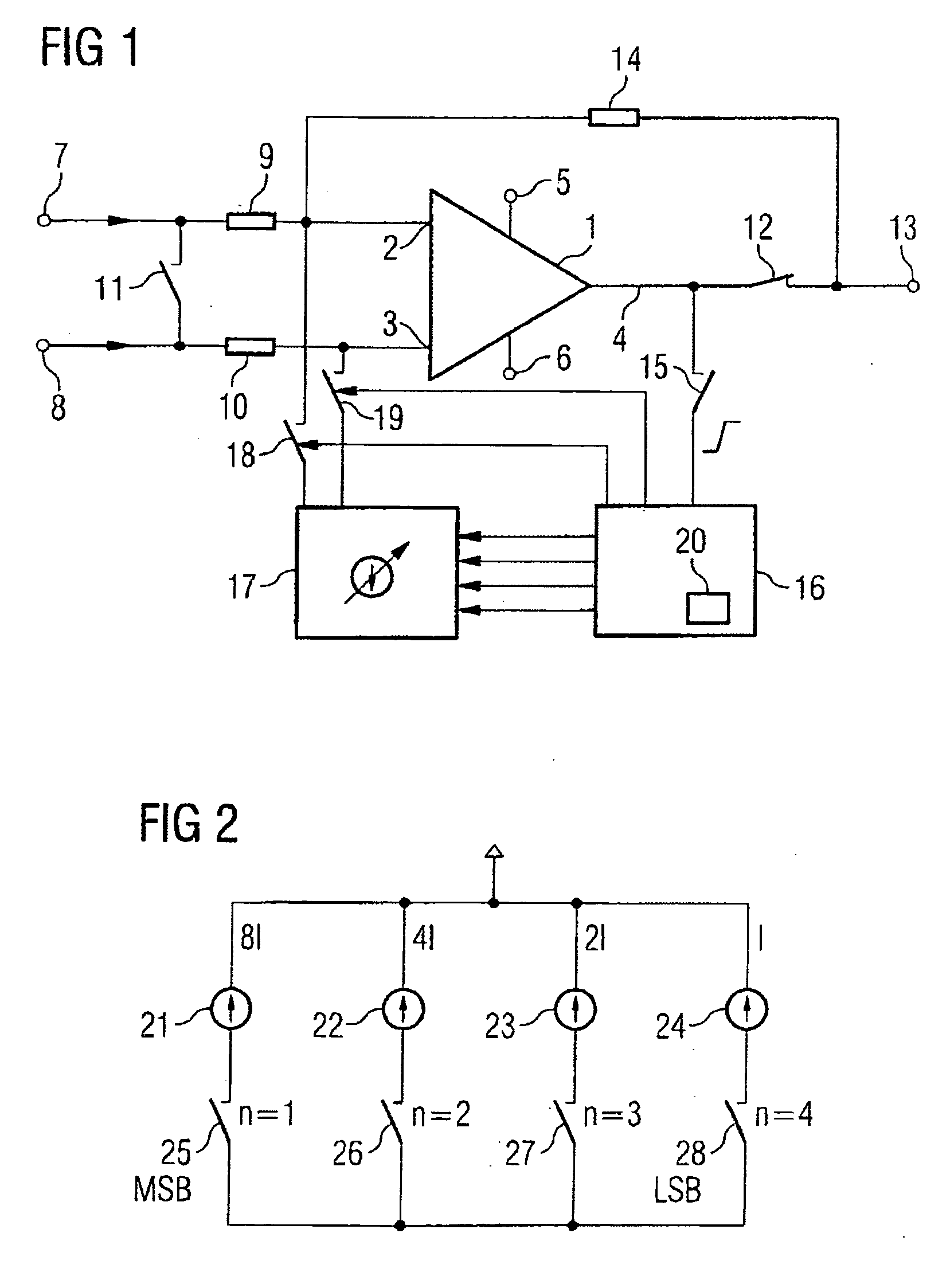Amplifier arrangement, and method for compensating for an offset
a compensation method and amplifier technology, applied in the field of amplifier arrangement, can solve the problems of system failure, significant increase of error vectors in digital modulation methods, undesirable effects of direct current (dc) offset, etc., and achieve the effect of improving the operation of the amplifier arrangement, reducing the dc offset at the input of the amplifier, and improving the dc offs
- Summary
- Abstract
- Description
- Claims
- Application Information
AI Technical Summary
Benefits of technology
Problems solved by technology
Method used
Image
Examples
Embodiment Construction
[0039]FIG. 1 shows an operational amplifier 1 having a first input 2, a second input 3 and an output 4. In addition, provision is made of respective connections 5, 6 for supplying a supply potential and a reference potential for the operational amplifier 1. A differential input 7, 8 of the arrangement is coupled to the inputs 2, 3 of the operational amplifier via a respective resistor 9, 10. A switch 11 which is in the form of a normally open contact is connected between the terminals 7, 8 of the differential input in order to selectively short-circuit the inputs 2, 3 of the operational amplifier in a compensation operating mode of the operational amplifier. In this case, the inputs 2, 3 are connected to one another via the series circuit comprising the resistors 9, 10. The output 4 of the operational amplifier is coupled selectively to an output 13 of the amplifier arrangement via a switch 12 which is in the form of a normally closed contact.
[0040] The output 13 of the arrangement...
PUM
 Login to View More
Login to View More Abstract
Description
Claims
Application Information
 Login to View More
Login to View More - R&D
- Intellectual Property
- Life Sciences
- Materials
- Tech Scout
- Unparalleled Data Quality
- Higher Quality Content
- 60% Fewer Hallucinations
Browse by: Latest US Patents, China's latest patents, Technical Efficacy Thesaurus, Application Domain, Technology Topic, Popular Technical Reports.
© 2025 PatSnap. All rights reserved.Legal|Privacy policy|Modern Slavery Act Transparency Statement|Sitemap|About US| Contact US: help@patsnap.com



